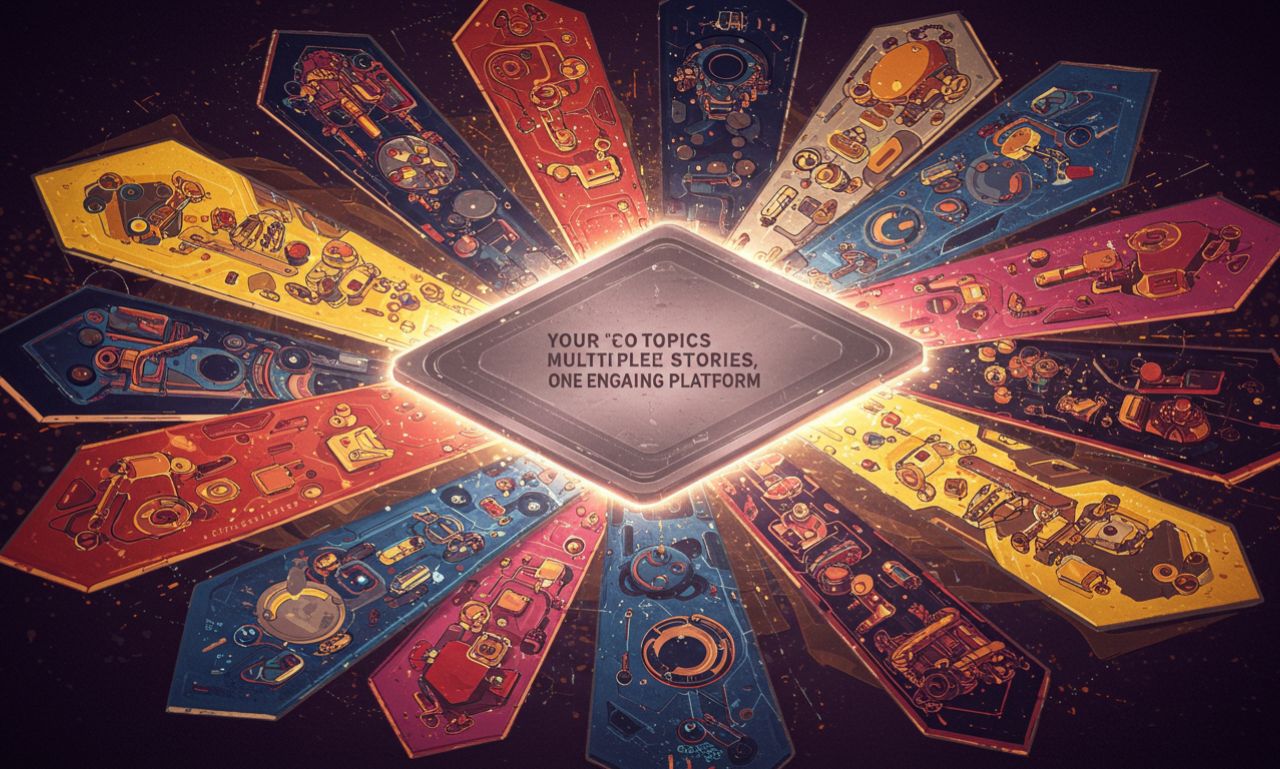In today’s fast-paced digital world, audiences are drawn not to single static posts—but to multiple stories that cover diverse angles, experiences, and voices. Whether you’re a content creator, brand, or educator, embracing the idea of “your topics, multiple stories” helps deliver more value, more engagement, and more credibility.
From Instagram stories and blog series to newsletters and YouTube playlists, presenting multiple stories under a unified theme builds stronger connections with your audience.
Building a Narrative with Your Topics
Defining “Your Topics”
Your topics are the areas you’re passionate about or wish to inform others on. These can include:
-
Technology and Innovation
-
Finance and Entrepreneurship
-
Travel and Culture
-
Education and Learning
-
Personal Development
Instead of focusing on a single one-off post, breaking each topic into multiple stories offers depth and variety, keeping your audience engaged longer.
Example: A Wellness Blogger
A wellness content creator might use multiple stories to explore:
-
Story 1: The science behind intermittent fasting
-
Story 2: Personal experience after 30 days of fasting
-
Story 3: Interviews with nutritionists
-
Story 4: Recipes that support fasting lifestyle
This strategy transforms one topic into a compelling series, keeping audiences coming back for the next part.
Why Multi-Story Content Works
1. Better Audience Engagement
Using multiple stories helps you speak to different segments of your audience. While some prefer expert insights, others might relate more to personal anecdotes or case studies.
2. Improved SEO and Visibility
From a search engine optimization perspective, targeting your topics through multiple stories allows for better keyword diversification and internal linking. This improves:
-
Session duration
-
Click-through rates
-
Domain authority
Each story supports the next, creating a content ecosystem that performs better on Google.
3. Brand Authority and Trust
When users see that you’re covering your topics in depth, not just at a surface level, it builds trust. People are more likely to subscribe, follow, or purchase when they view you as a subject matter expert.
Multi-Story Formats for Digital Creators
Blog Series
Instead of one long blog post, break your topic into chapters. For example:
-
Topic: Remote Work
-
Blog Series:
-
Part 1: Best Tools for Remote Teams
-
Part 2: Managing Productivity from Home
-
Part 3: Balancing Work and Life Remotely
-
Video Playlists
For YouTubers or educators, creating multiple videos on a topic allows viewers to binge content while learning incrementally.
Carousel Posts and Reels
Social platforms like Instagram and TikTok reward frequent and engaging content. Use multi-post carousels or short video series to cover tutorials, facts, or step-by-step guides.
Multiple Stories in Brand Storytelling
Businesses can use multiple stories to highlight:
-
Customer success stories
-
Behind-the-scenes operations
-
Team member spotlights
-
Product development journey
This turns abstract brand values into relatable human stories that resonate.
Case Example: A Sustainable Fashion Brand
-
Story 1: How we source ethical materials
-
Story 2: Meet the artisans behind your clothes
-
Story 3: Why we avoid fast fashion
-
Story 4: Real customer reviews and style inspiration
The more transparent and multidimensional your storytelling, the stronger the emotional connection with your audience.
Tips for Creating Effective Multi-Story Content
-
Plan a Content Calendar
Organize your topics into weekly or monthly themes with planned story drops. -
Keep Each Story Focused
Even though it’s part of a larger narrative, each story should deliver value on its own. -
Use Visual Consistency
Stick to a brand color, font, or video style so your content looks cohesive. -
Include Calls-to-Action (CTAs)
At the end of each story, lead your audience to the next one:
“In the next story, we’ll dive into…” -
Repurpose Across Platforms
One story can be a video, blog post, infographic, and email—maximize your reach.
Conclusion: Stories That Scale
In a world of endless scrolling and short attention spans, multiple stories on your topics give people a reason to pause, explore, and connect. Whether you’re building a brand, educating an audience, or sharing your creative vision, using a multi-story approach ensures you’re not just heard—but remembered.










